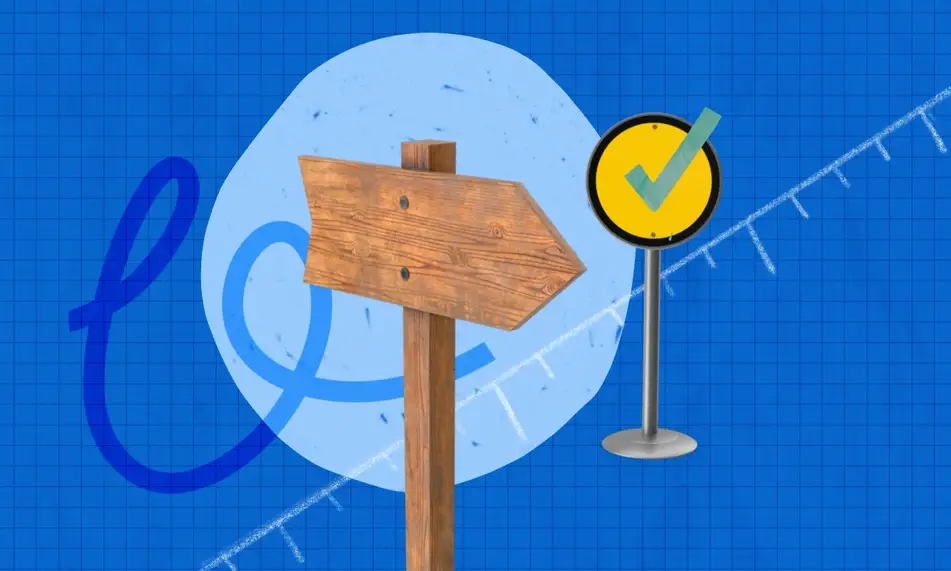How to Create Your Career Blueprint

What's the next step for your career? Let us know in the comments!
***
Even if you know know where you’d like to end up a few months or a few years down the road, it can still be challenging to keep yourself on track to reach your professional goals. Mapping out your vision may provide the structure you need.
To help you get where you want to be, try these tips for creating a career blueprint and make a plan—even just theoretically—for the future.
Use today as the baseline for your career blueprint
Start by taking stock of where you are at this very moment. Whether you’re struggling through an early-career transition or celebrating many years at your current job, you’ll find it helpful to establish a starting point from which to grow.
Consider what is most important to you in your professional development. Do you need a clear path toward advancement in order to feel fulfilled at work? A little more challenge in your day-to-day? A sense of security and routine? A sense of empowerment and ownership? Each of us has a unique set of career needs and it’s important that you take the time to define your professional values and to honor them in your plan.
- Describe your position. Start by detailing your current situation. Rather than typing up your job description verbatim, focus on what you think best captures your role and your day-to-day responsibilities. Consider how you describe your job to friends and family. And if you’re seeking employment, talk about how long you’ve been searching.
- Consider your biggest challenges. List all of the parts of your job that you find demanding or that require you to push through a challenge. This could be anything from time management or workplace friendships to something relating to the objectives of your role, such as funding or recruitment goals.
- Consider your most rewarding accomplishments.
- Describe your short-term goals. Think of your 30-, 60-, or 90-day goals. Include specific project-related objectives and give thought to professional development planning. If you’re job hunting, lay down a few ideas for where you hope to see your search develop in the short term.
After you’ve compiled this information, start evaluating your current situation. Annotate or highlight responses that stand out to you and look for themes or commonalities. Maybe one of your biggest challenges has also come to be a rewarding part of your job. Or you may find that your goals are related to a particular area such as gaining more leadership experience or addressing conflict. Taking time to uncover what you identify as your most pressing priorities and must-haves at this moment will help you lay out what you want in your professional future.
Identify big-picture goals
After you review where you are now, it's time to start looking ahead. In this part of the exercise, allow yourself to paint broad, big-picture strokes about what you want. A few helpful things to consider include:
- Envisioning your dream job. Whether you pick a title at a specific organization or simply know the area that you have your sights set on, describe it.
- Planning your career path. If getting to your dream job includes stepping stones along the way, write down what you imagine those to be. For example, if you aim to be a nonprofit executive, your goals may be to start pursuing both informal and formal leadership and management opportunities (such as supervising an intern, serving as a team lead, or volunteering within your organization), joining a junior nonprofit board, seeking mentorship from nonprofit leaders in your field, taking nonprofit management coursework or obtaining an advanced degree, and gaining solid experience as a departmental or program manager.
- Listing key milestones. What does success on the path toward your ultimate career goal look like? Consider some common milestones for somebody in your line of work, but don't be shy about including more personal and specific milestones on this list as well.
When you’re detailing long-term goals, you have the freedom to include some details you may otherwise gloss over in an interview. For example, if you’d love to start a social-impact podcast, lead your own nonprofit while growing your family, or you have an idea of the dream team you’d love to recruit and manage one day, write it all down! This is a document for you alone, so give yourself permission to think big as you embrace and articulate your ambitions.
Figure out your career blueprint's Point A and Point B
Now it's time to bring it all together by creating a visual map or diagram of how you’ll get to your ultimate career goal.
While some steps may be easier to define, such as going to graduate school, other methods for working toward your goals may be less fixed or sequential. These could include a mixture of measures such as:
- Setting yearly performance goals for yourself and with your manager and/or team.
- Reminding and empowering yourself to ask for raises or promotions.
- Prioritizing professional development through trainings, online education, or formal classes.
- Seeking mentorship as a tool for career and personal growth.
A career blueprint should be an iteration of what you envision for yourself. Remember that this is a work in progress and you have the power to make adjustments as necessary.
Yoona Wagener is a freelance writer and WordPress developer who believes in the value of nonlinear career paths. She has experience in academic publishing, teaching English abroad, serving up customer support to software end users, writing online help documentation, and mission-driven nonprofit marketing and communications.






